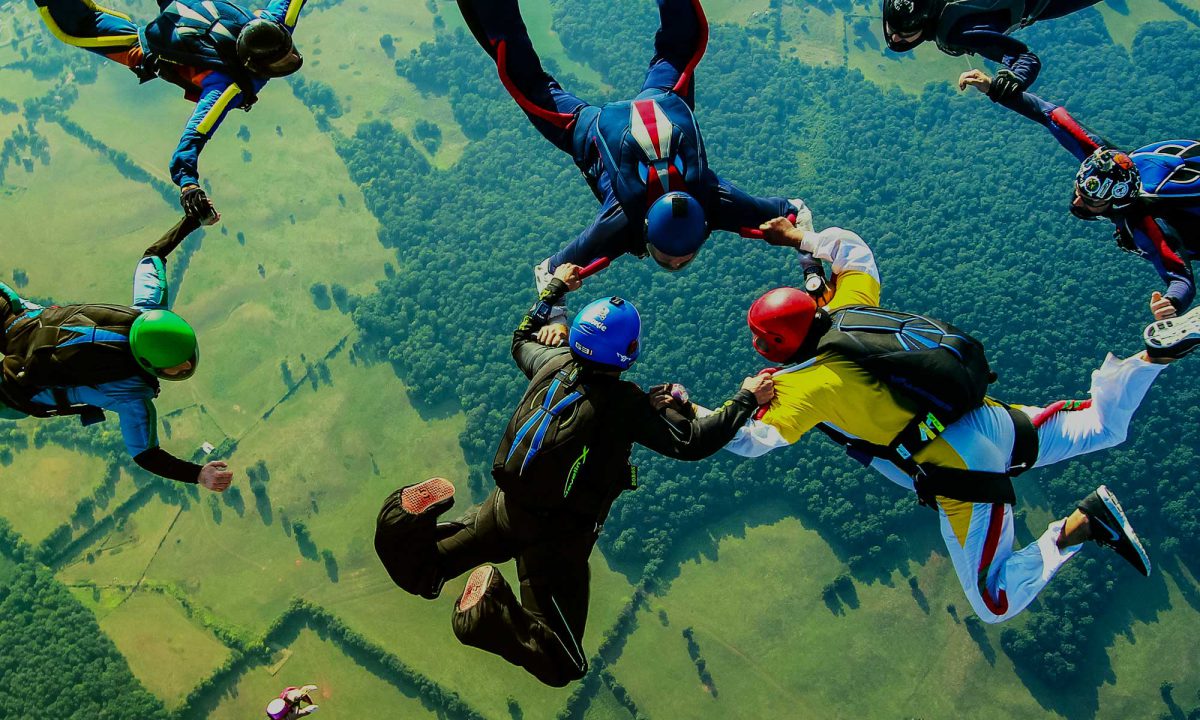
The Physics Of Skydiving
Wednesday, December 8, 2021
- Skydive Orange
- 12/08/21
- 0
- General
Does the thought of physics bring a yawn to your lips or give you fatigue-inducing flashbacks to boring lectures?
Well, we are taking this particular branch of natural science and adding a little bit of spice. How could we possibly make physics interesting you wonder? With skydiving, of course!
Trust us, the physics of skydiving is anything but boring. Here’s how it all works. Skydiving Physics School is in session!
The Physics of Skydiving
Physics is all about matter and how that matter behaves as it moves through space and time. In the case of skydiving, the focus is on how the body experiences freefall.
First off, we should denote that in skydiving, the freefall we reference is the portion of time after you exit the plane and before the parachute is deployed. Although we call it free fall, it is not technically free fall as it relates to the study of physics. In physics, an object in freefall is under the sole influence of gravity. As we will explain, this is not the case with a body during a skydive.

Skydiving Freefall
So, you’ve just taken that first harrowing step from the safety of the plane and into the wild blue yonder. Within the first few seconds, your body will speed up as you fall to the ground. But why don’t you keep on speeding up forever? (Aside from the presence of the ground, of course!)
The physics of skydiving involves the force of gravity upon the body and includes the important role of air resistance. The air is not simply an expanse of open, unoccupied space. Rather, it consists of many air molecules. On a skydive, as the body falls through the air, it collides with these particles, pushing them out and away, much like a swimmer moving through water. This collision with air molecules is called air resistance or drag. As the body falls, this resistance creates an oppositional force to gravity.
Terminal Velocity Skydiving
Ultimately, the jumper will reach a point at which they no longer accelerate. This is called terminal velocity. Terminal velocity is the balance point where the sum of the drag from air resistance equals the downward force of gravity.
If you want to get technical, the equation to find terminal velocity is V = √(2mg/ρACd ), where
V = terminal velocity
m = mass of the falling object
g = the force of gravity
ρ = the density of the medium through which the object is falling
A = the projected area of the object (in this case perpendicular to the flow of air)
Cd = drag coefficient (which varies based on the medium i.e. air vs water)
The terminal velocity we typically think of with skydiving is 120 mph. However, this terminal speed is true only for skydiving in a belly-to-earth orientation. If you were to change the amount of surface area exposed to the air, say by flying in a head-down orientation, the terminal speed would increase.
Take for example Henrik Raimer, a Swedish jumper who reached an incredible 373.6 mph and holds the world record for the world’s fastest skydive!

How Does a Parachute Work?
The deployed parachute is the final drag force that slows the jumper’s descent enough so that they may land safely. With regard to the physics of skydiving, this is done by increasing the amount of air resistance and thus lowering the falling jumper’s terminal velocity.
In addition to adding surface area and increasing drag, because of the airfoil design, the parachute also generates lift. This means instead of simply drifting to the ground the parachute can to fly.
And That, Folks, is Science!
Alright, smartypants, ready to experience the physics of skydiving first hand? Give us a call or click, and let’s get you in the air!
The largest tandem skydiving center near Northern Virginia, Washington D.C. and Maryland.
Copyright © 2024, Skydive Orange, All Rights Reserved.
DropZone Web Design & Marketing by Beyond Marketing, LLC


